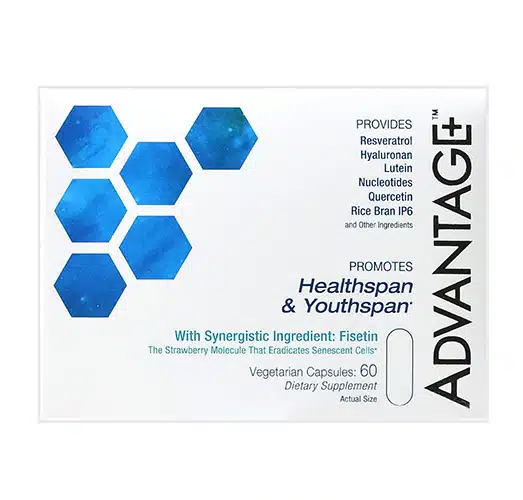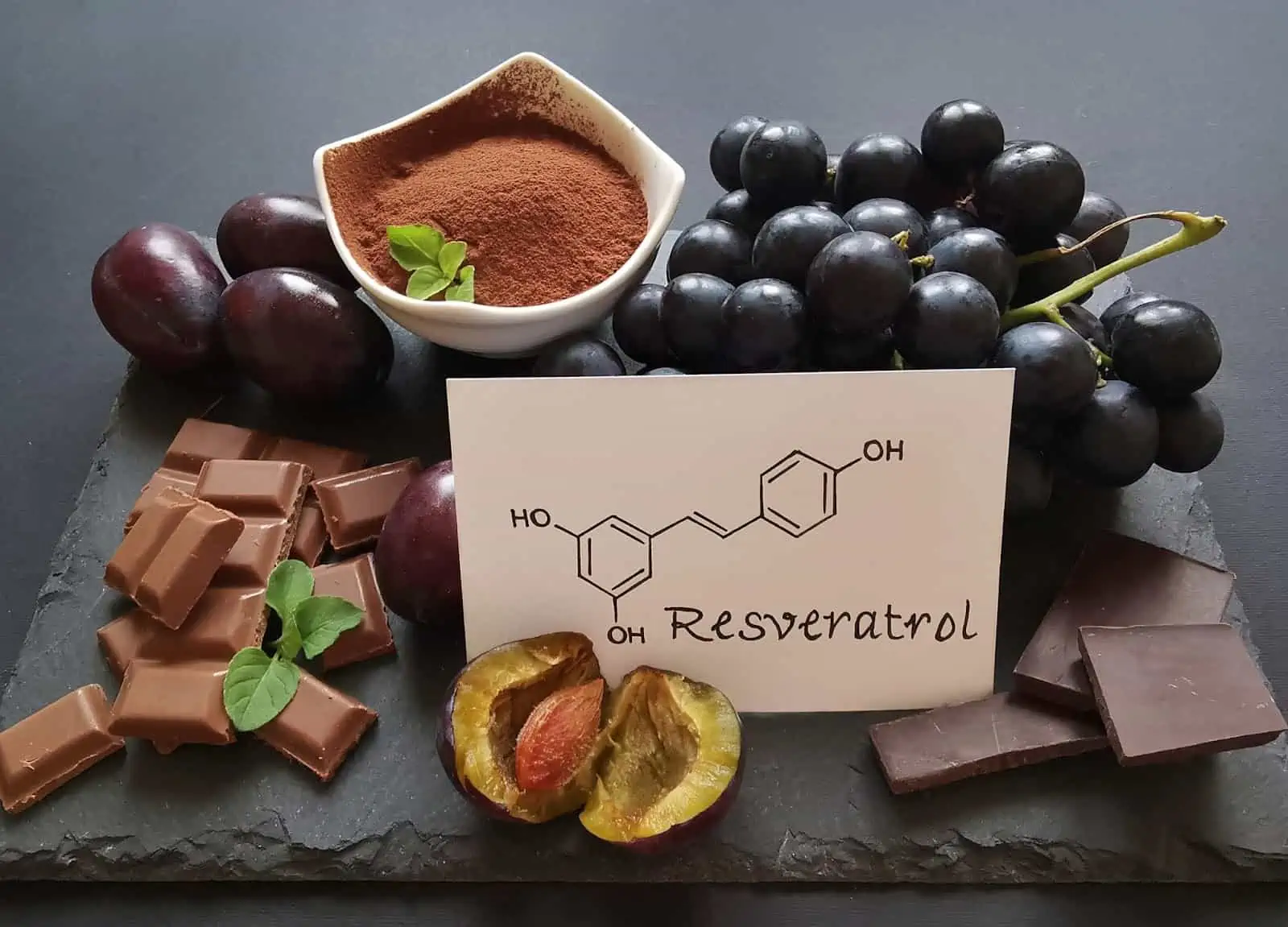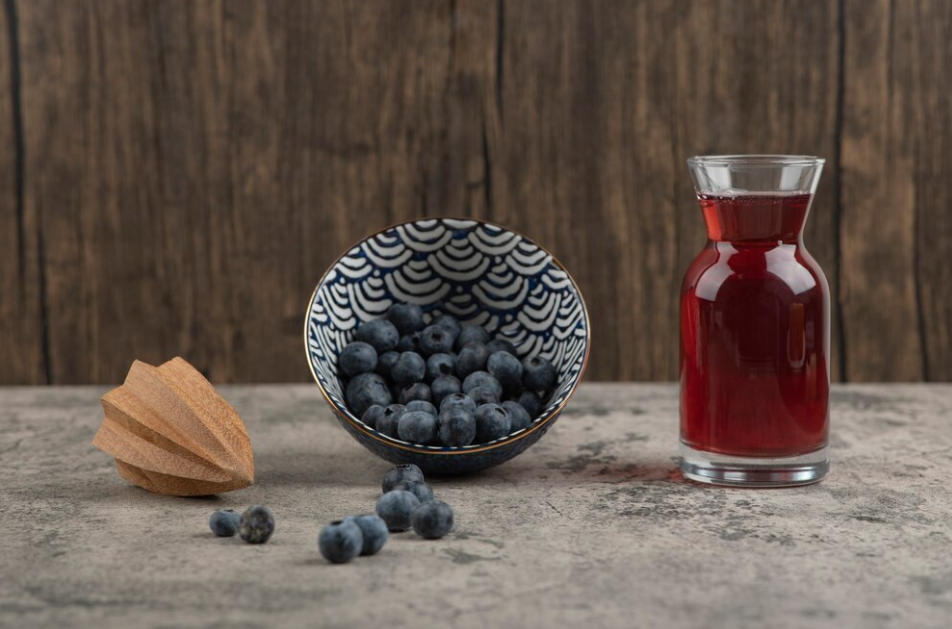by William Clearfield, D.O. for Longevinex
Prelude: Where’s Teddy?
Those who revel in Teddy’s stories (1-2) might be slightly disappointed today. An enthusiastic student of all things anti-aging, Teddy volunteered as a research assistant. An opportunity arose that perfectly matched his skill set. Teddy is on assignment to find the perfect anti-aging and anti-inflammatory supplement. What follows is his report. Teddy will be back in person shortly.
Introduction:
Worth USD 40.49 billion in 2020, the global market for anti-aging and anti-inflammatory products continues to grow at an annual rate of 5.4%. (3) Our conundrum lies in that many over-the-counter products advertise dramatic results backed by relatively little scientific data to support their claims.
A quick Google search for “anti-aging” products yields 206 million hits in less than one second. A second Google Scholar, the ”search engine” for scholarly literature, results in more than five thousand entries. (4)
As the pursuit of longevity and vibrant health continues to gain prominence, individuals and corporate entities promoting, for example, ‘age-defying, revitalizing, rejuvenating and restoring, and recapture your youth” products are becoming increasingly bold in their pronouncements. As the market crowds, voices of reason, all too often absent in the pursuit of market share, become increasingly extreme.
Teddy’s assignment was to answer the question, if even possible, within a reasonable degree of medical certainty, what constitutes the ideal anti-aging, anti-inflammatory product? Can we construct such a substance? Are there any supplements on the market presently that fit the bill, or do we need to create one from scratch?
The Properties of the Ideal Antiaging and Anti-inflammatory Supplement
My mentor, Dr. Jim Naccarato, starts each lecture with the admonishment to empty our brains of all the “schmutz,” as he describes it.

“Pretend there is a zipper around your forehead. Unzip it, open the top of your skull, turn yourself upside down, and dump the contents. Next, turn upright and rezip. Now that all of the nonsense is out of your system, with a clean slate, we begin.” (5)
Following Dr. Naccarato’s guidelines, we unleashed our inner Teddy to analyze and, if necessary, develop a new “ideal” anti-aging, anti-inflammatory product. Teddy tracked down all of the ingredients that work synergistically to support overall well-being and combat the effects of aging.
Our compound, which we will call Substance X, needs agents to activate antiaging genetic codes and properties to enhance cellular function. It must counter oxidative stress and mitochondrial (energy) dysfunction. Lastly, Substance X should be anti-inflammatory, possess cardiovascular and immune support, be pleomorphic to help regenerate tissue, enhance exercise performance, and show some anti-cancer effects.
With this “shopping list,” Teddy came up with eleven candidates.
“Before I begin,” Teddy wrote, “It is unlikely we will find a single over-the-counter supplement that contains all the listed ingredients. Our “wish” list is quite specific and may vary across different formulations. I expect we will need three, four, or even five supplements to cover my list.”
Was Teddy ever wrong!
The Magnificent Antiaging, Anti-inflammatory Eleven
- Trans-resveratrol: (6)
a.Trans-resveratrol is a highly purified and potent age-defying polyphenol derived from Japanese knotweed. The ideal anti-aging supplement must contain Japanese knotweed-derived trans-resveratrol to ensure a standardized, concentrated product that maximizes resveratrol’s bioavailability and effectiveness.
b. Unlike nearly all 350 other (cis) resveratrol on the market, trans-resveratrol epigenetically stimulates longevity and drives cellular respiration.
c. Trans-resveratrol is a potent antioxidant. It protects cells from oxidative stress, supports cardiovascular health, reduces inflammation, resists neoplastic cell changes, and enhances memory, cognition, and bone strength.
d. We reviewed the ”50 Ways Resveratrol Enhances Our Health” discussed in our last report. (7) - Quercetin: (8)
a. A versatile antioxidant flavonoid found in fruits and vegetables, quercetin is a potent antioxidant and anti-inflammatory compound.
b. Quercetin combats oxidative stress while reducing total body inflammation.
c. Quercetin supports the cardiovascular and immune systems, modulates neoplastic cells, and improves exercise performance by stimulating the production of ATP. ATP runs cellular functions, translating into more precise thought processes, increased energy, and loss of brain “fogginess.”
d. Quercetin downregulates the production of the transcriptional trigger for inflammation, the notorious NF-κβ gene expression. (9) - Rice Bran IP6:a. In rice bran, IP6, inositol hexaphosphate, is a potent antioxidant and immune function supporter
b.IP 6 maintains cellular integrity and supports healthy cell growth. (10)
c. Rice bran phytate inhibits cholesterol absorption in the gut while lowering LDL (bad) cholesterol on average by 6.91 mg/dL. For every 1 mg/dL drop in LDL, cardiac disease risk decreases by 1-2%.
d. Rice bran phytate reduces the risk of high-fat diet-induced hyperglycemia. (11-12)
e. Rice bran phytate is associated with a decreased production of the pro-inflammatory cytokines IL-1B, IL-2, TNF-alpha, and INF-gamma while increasing the production of anti-inflammatory cytokines IL-22 and IL-23. (13)
f. Rice bran phytate is anti-hypertensive and improves endothelial function. (14-15) - Vitamin D3:
a. Derived from sunlight, Vitamin D aids in calcium absorption, strengthening bone.
b. Vitamin D3 reduces inflammation and enhances immune, heart, and blood vessel integrity.
c. Vitamin D3 regulates insulin production and metabolism. (16)
d. A “pro-hormone” Vitamin D helps process cortisol and growth hormone. (17)
e. Vitamin D acts as a sleep “aid.” (18)
f. Crucial for brain health, low levels of Vitamin D lead to anxiety, attention deficits, depression, cognitive decline, mood disorders, obsessive-compulsive tendencies, and schizophrenia and Alzheimer’s disease. (19)
g. Vitamin D increases free testosterone concentrations by affecting the cholesterol side chain cleavage enzyme. This enzyme converts cholesterol into pregnenolone, the precursor of sex hormones, including testosterone. (20) - Nucleotides:
a. Nucleotides are essential molecules involved in cellular repair and regeneration. (21)
b. Nucleotides form the building blocks of DNA. Adequate nucleotide availability is necessary for efficient DNA repair. (22)
c. Involved in energy metabolism, nucleotides, specifically in ATP production, ensure optimal energy while combating age-related fatigue. (23)
d. A key component in collagen synthesis, nucleotides supply tissue structural support and elasticity. Adequate nucleotide levels contribute to the maintenance of healthy, youthful-looking skin and tissue integrity. (24)
e. A “must have” for proper immune function, nucleotides support the production and maturation of immune cells, our primary defense against invading pathogens. (25)
f. Nucleotides participate in synthesizing signaling regulators cyclic adenosine monophosphate (cAMP) and guanosine monophosphate (cGMP), which regulate cellular processes. (26) - Beta Cyclodextrin
a. Obtained from starch and composed of seven glucose units in a ring-like structure, beta-cyclodextrin is used as an inclusion complex to enhance the absorption and bioavailability of other ingredients. (27)
b. By forming complexes with various compounds, beta-cyclodextrin improves the solubility and stability of the components of a supplement or drug while ensuring efficient utilization and maximizing their benefits.
c. Utilized in the food and fragrance industries, beta-cyclodextrin preserves sensitive flavors and aromas, preventing their degradation due to exposure to light, heat, or oxidation.
d. On a global scale, beta-cyclodextrins form inclusion complexes with air pollutants and soil contaminants, aiding environmental cleanup efforts. (28) - Fisetin
a. Fisetin, a flavonoid in various fruits and vegetables, exhibits potent antioxidant and anti-inflammatory properties. (29)
b. Oxidative stress (OS) disrupts macromolecules’ chemical integrity, increasing the risk of neurodegenerative diseases.
c. Fisetin protects against age-related cognitive decline, improves memory, and promotes synaptic plasticity, essential for optimal brain function. (30)
d. Fisetin plays a crucial role in improving focus, concentration, and mood. (31) - Beta Glucan
a. A polysaccharide found in yeast, oats, and mushrooms, beta-glucan modulates the immune system. (32)
b. Beta-glucan activates immune cells, enhancing their ability to defend against pathogens and decreasing chronic inflammation. (33)
c. Beta-glucans boost collagen for more youthful appearing skin, reduce the appearance of fine lines and wrinkles, improve skin elasticity and firmness, enhance skin hydration and moisture retention, and support a healthy, vibrant complexion. (34) - Vitamin B1 as Benfotiamine:
a. Vitamin B1, in the form of benfotiamine, supplies superior bioavailability to traditional vitamin B1.
b. Benfotiamine protects nerve tissue against oxidative stress and the formation of advanced glycation end-products (AGEs). (35)
c. AGEs are associated with accelerated aging and various age-related diseases. (36)
d. Benfotiamine enhances cognitive function and mental clarity. (37)
e. Benfotiamine supports healthy skin aging and appearance by promoting collagen production.
f. Benfotamine reduces wrinkles and age spots. (38) - Lutein/Zeaxanthin:
a. Carotenoids that act as powerful antioxidants, lutein, and zeaxanthin, enhance visual acuity and protect against age-related macular degeneration (AMD) and cataracts. (39)
b. Lutein and Zeaxanthin reduce oxidative stress throughout the body and support overall health and longevity. (40)
c. Lutein and Zeaxanthin promote healthy skin by improving hydration while preventing the formation of fine lines and wrinkles. (41) - Hyaluronic Acid:
a. Hyaluronic acid is a naturally occurring substance in the skin, connective tissues, and joints.
b. Hyaluronic acid is crucial in maintaining skin hydration for a plump, youthful appearance.
c. Hyaluronic acid improves skin elasticity and firmness, enhances moisture retention, restores dry, dull-looking skin, and reduces “age” spots and uneven skin tone. (42)
d. Hyaluronic acid contributes to joint lubrication, comfort, and flexibility. (43)
Teddy reiterated his pessimism about finding a simple supplement that embraces all of his ‘white-hot” must-have ingredients.
I quickly addressed his concern.
“Au contraire,” Teddy, I texed back. “Au contraire. Your description of the ‘ideal’ anti-aging, anti-inflammatory, antioxidant supplements is right before me.”

“Not only possible,” I replied. “I’m holding it in my hands right now. Longevinex and Longevinex Advantage contain every ingredient you listed.”
- Trans-resveratrol: Antioxidant, anti-inflammatory.
- Quercetin: Antioxidant, immune system support.
- Rice bran IP6: Antioxidant, cholesterol and blood sugar lowering, anti-cancer agent.
- Vitamin D3: Bone health, immune support.
- Nucleotides: DNA and RNA building blocks.
- Beta cyclodextrin: Encapsulation, drug delivery system.
- Fisetin: Anti-oxidant, anti-aging properties.
- Beta Glucan: Immune system modulation
- Vitamin B1 as Benfotiamine: Nerve health, energy metabolism.
- Lutein/Zeaxanthin: Eye health, antioxidant protection.
- Hyaluronic acid: Skin hydration, joint health.
Summary:
Longevinex and Longevinex Advantages’ combination of constituents allows us to simplify any anti-aging, anti-inflammatory, and antioxidant support regimen. This single-agent approach is cost-effective compared with multiple separate supplements. The ingredients are synergistic with one another for amplified results (1+ 1=5 rather than 2), and we can better effect a comprehensive regimen for overall well-being.
Conclusion:
Single combination agents Longevinex and Longevinex Advantage pack the eleven essential ingredients necessary for a complete anti-aging, anti-inflammatory, and anti-oxidant regimen. Expected benefits include:
- Enhanced cellular function and longevity through the activation of longevity genes.
- Protection against oxidative stress and inflammation.
- Support of cardiovascular health.
- Improved cognitive function, memory, and brain health.
- The positive effect of the immune system and defense against pathogens.
- Prevention of glycation-related damage and preservation of nerve function.
- Support for eye health and reduced risk of age-related vision disorders.
- Support for skin hydration, elasticity, and joint flexibility.
I reminded Teddy that Longevinex and Longevinex Advantage are part of a comprehensive approach to overall well-being. A balanced diet, regular exercise, adequate sleep, stress management, and target supplementation are all essential for a healthy, maturing lifestyle.
References
- Clearfield, W., ‘Resveratrol, Cholesterol, and Your Brain.’ https://longevinex.com/resveratrol-cholesterol-and-your-brain/ May 16, 2023
- Clearfield, W., 50 Ways Resveratrol Improves Health: Discover the Benefits of Resveratrol, https://longevinex.com/50-ways-resveratrol-improves-health-discover-the-benefits-of-re sveratrol/, May 26, 2023
- https://www.grandviewresearch.com/industry-analysis/anti-aging-products-market
- https://scholar.google.com/scholar?hl=en&as_sdt=0%2C5&q=market+share+of+over+th e+counter+anti-aging+and+anti+inflammatory+products&btnG=
- Naccarato, J., “The Realigned Practice,” Lecture material, South Lake Tahoe, California, March 10, 2022.
- Zhou, D. D., Luo, M., Huang, S. Y., Saimaiti, A., Shang, A., Gan, R. Y., & Li, H. B. (2021). Effects and Mechanisms of Resveratrol on Aging and Age-Related Diseases. Oxidative medicine and cellular longevity, 2021, 9932218. https://doi.org/10.1155/2021/9932218
- Clearfield, W., 50 Ways Resveratrol Improves Health: Discover the Benefits of Resveratrol, https://longevinex.com/50-ways-resveratrol-improves-health-discover-the-benefits-of-re sveratrol/, May 26, 2023
- Anand David, A. V., Arulmoli, R., & Parasuraman, S. (2016). Overviews of Biological Importance of Quercetin: A Bioactive Flavonoid. Pharmacognosy reviews, 10(20), 84–89. https://doi.org/10.4103/0973-7847.194044
- Nair, M. P., Mahajan, S., Reynolds, J. L., Aalinkeel, R., Nair, H., Schwartz, S. A., & Kandaswami, C. (2006). The flavonoid quercetin inhibits proinflammatory cytokine (tumor necrosis factor-alpha) gene expression in normal peripheral blood mononuclear cells via modulation of the NF-kappa beta system. Clinical and vaccine immunology: CVI, 13(3), 319–328. https://doi.org/10.1128/CVI.13.3.319-328.2006
- Kapral, M., Wawszczyk, J., Sośnicki, S., & Węglarz, L. (2013). Differential influence of inositol hexaphosphate on the expression of genes encoding TGF-β isoforms and their receptors in intestinal epithelial cells stimulated with proinflammatory agents. Mediators of inflammation, 2013, 436894. https://doi.org/10.1155/2013/436894
- Jolfaie NR, Rouhani MH, Surkan PJ, Siassi F, Azadbakht L. Rice Bran Oil Decreases Total and LDL Cholesterol in Humans: A Systematic Review and Meta-Analysis of Randomized Controlled Clinical Trials. Horm Metab Res. 2016;48(7):417-426. doi:10.1055/s-0042-105748
- Soo Mi Kim, Catherine W. Rico, Sang Chul Lee, Mi Young Kang, Modulatory Effect of Rice Bran and Phytic Acid on Glucose Metabolism in High Fat-Fed C57BL/6N Mice, Journal of Clinical Biochemistry and Nutrition, 2010, Volume 47, Issue 1, Pages 12-17
- Su, Weifa, et al. “Co-fermented defatted rice bran alters gut microbiota and improves growth performance, antioxidant capacity, immune status, and intestinal permeability of finishing pigs.” Animal nutrition (Zhongguo xu mu shou yi xue hui) vol. 11 413-424. 7 Aug. 2022, doi:10.1016/j.aninu.2022.07.008
- Sapwarobol, Suwimol, et al. “Biological Functions and Activities of Rice Bran as a Functional Ingredient: A Review.” Nutrition and metabolic insights vol. 14 11786388211058559. 5 Dec. 2021, doi:10.1177/11786388211058559
- Duansak, Naphatsanan, et al. “The Effect of Rice Bran Extract on Arterial Blood Pressure, Hepatic Steatosis, and Inflammation in Mice Fed with a High-Fat Diet.” Journal of Nutrition and Metabolism vol. 2020 8374287. 26 Jun. 2020, doi:10.1155/2020/837428
- Aranow C. (2011). Vitamin D and the immune system. Journal of investigative medicine: the official publication of the American Federation for Clinical Research, 59(6), 881–886. https://doi.org/10.2310/JIM.0b013e31821b8755
- Maggio, M., Lauretani, F., De Vita, F., Basaria, S., Lippi, G., Butto, V., Luci, M., Cattabiani, C., Ceresini, G., Verzicco, I., Ferrucci, L., & Ceda, G. P. (2014). Multiple hormonal dysregulation as a determinant of low physical performance and mobility in older persons. Current pharmaceutical design, 20(19), 3119–3148. https://doi.org/10.2174/13816128113196660062
- Abboud M. (2022). Vitamin D Supplementation and Sleep: A Systematic Review and Meta-Analysis of Intervention Studies. Nutrients, 14(5), 1076. https://doi.org/10.3390/nu14051076
- Anjum, I., Jaffery, S. S., Fayyaz, M., Samoo, Z., & Anjum, S. (2018). The Role of Vitamin D in Brain Health: A Mini Literature Review. Cureus, 10(7), e2960. https://doi.org/10.7759/cureus.2960
- Bikle DD. Vitamin D: Production, Metabolism, and Mechanisms of Action. [Updated 2021 Dec 31]. In: Feingold KR, Anawalt B, Blackman MR, et al., editors. Endotext [Internet]. South Dartmouth (MA): MDText.com, Inc.; 2000-. Available from: https://www.ncbi.nlm.nih.gov/books/NBK278935/
- Zala, D., Schlattner, U., Desvignes, T., Bobe, J., Roux, A., Chavrier, P., & Boissan, M. (2017). The advantage of channeling nucleotides for very processive functions. F1000Research, 6, 724. https://doi.org/10.12688/f1000research.11561.2
- Alberts B, Johnson A, Lewis J, et al. Molecular Biology of the Cell. 4th edition. New York: Garland Science; 2002. DNA Replication Mechanisms. Available from: https://www.ncbi.nlm.nih.gov/books/NBK26850/
- Tardy, A. L., Pouteau, E., Marquez, D., Yilmaz, C., & Scholey, A. (2020). Vitamins and Minerals for Energy, Fatigue, and Cognition: A Narrative Review of the Biochemical and Clinical Evidence. Nutrients, 12(1), 228. https://doi.org/10.3390/nu12010228
- Rinnerthaler, M., Bischof, J., Streubel, M. K., Trost, A., & Richter, K. (2015). Oxidative stress in aging human skin. Biomolecules, 5(2), 545–589. https://doi.org/10.3390/biom5020545
- Chen, C. Z., Schaffert, S., Fragoso, R., & Loh, C. (2013). Regulation of immune responses and tolerance: the microRNA perspective. Immunological Reviews, 253(1), 112–128. https://doi.org/10.1111/imr.12060
- Cheepala, S., Hulot, J. S., Morgan, J. A., Sassi, Y., Zhang, W., Naren, A. P., & Schuetz, J. D. (2013). Cyclic nucleotide compartmentalization: contributions of phosphodiesterase and ATP-binding cassette transporters. Annual review of pharmacology and toxicology, 53, 231–253. https://doi.org/10.1146/annurev-pharmtox-010611-134609
- Wüpper, S., Lüersen, K., & Rimbach, G. (2021). Cyclodextrins, Natural Compounds, and Plant Bioactives-A Nutritional Perspective. Biomolecules, 11(3), 401. https://doi.org/10.3390/biom11030401
- Giastas P, Yannakopoulou K, Mavridis IM. Molecular structures of the inclusion complexes beta-cyclodextrin-1,2-bis(4-aminophenyl)ethane and beta-cyclodextrin-4,4′-diaminobiphenyl; packing of dimeric beta-cyclodextrin inclusion complexes. Acta Crystallogr B. 2003 Apr;59(Pt 2):287-99. doi: 10.1107/s010876810300257x. Epub 2003 Mar 26. PMID: 12657820.
- Kubina, R., Krzykawski, K., Kabała-Dzik, A., Wojtyczka, R. D., Chodurek, E., & Dziedzic, A. (2022). Fisetin, a Potent Anticancer Flavonol Exhibiting Cytotoxic Activity against Neoplastic Malignant Cells and Cancerous Conditions: A Scoping, Comprehensive Review. Nutrients, 14(13), 2604. https://doi.org/10.3390/nu14132604
- Hassan, S. S. U., Samanta, S., Dash, R., Karpiński, T. M., Habibi, E., Sadiq, A., Ahmadi, A., & Bunagu, S. (2022). The neuroprotective effects of fisetin, a natural flavonoid in neurodegenerative diseases: Focus on the role of oxidative stress. Frontiers in pharmacology, 13, 1015835. https://doi.org/10.3389/fphar.2022.1015835
- Currais A, Prior M, Dargusch R, et al. 2014. Modulation of p25 and inflammatory pathways by fisetin maintains cognitive function in Alzheimer’s disease transgenic mice. Aging Cell 13: 379–390.
- Murphy, E. J., Rezoagli, E., Major, I., Rowan, N. J., & Laffey, J. G. (2020). β-Glucan Metabolic and Immunomodulatory Properties and Potential for Clinical Application. Journal of fungi (Basel, Switzerland), 6(4), 356. https://doi.org/10.3390/jof6040356
- Goodridge, H. S., Wolf, A. J., & Underhill, D. M. (2009). Beta-glucan recognition by the innate immune system. Immunological Reviews, 230(1), 38–50. https://doi.org/10.1111/j.1600-065X.2009.00793.x
- https://www.provenskincare.com/skincare-ingredients/beta-glucan-v2/
- Sambon, M., Wins, P., & Bettendorff, L. (2021). Neuroprotective Effects of Thiamine and Precursors with Higher Bioavailability: Focus on Benfotiamine and Dibenzoylthiamine. International journal of molecular sciences, 22(11), 5418. https://doi.org/10.3390/ijms22115418
- Luevano-Contreras, C., & Chapman-Novakofski, K. (2010). Dietary advanced glycation end products and aging. Nutrients, 2(12), 1247–1265. https://doi.org/10.3390/nu2121247
- Sambon M, Wins P, Bettendorff L. Neuroprotective Effects of Thiamine and Precursors with Higher Bioavailability: Focus on Benfotiamine and Dibenzoylthiamine. International Journal of Molecular Sciences. 2021; 22(11):5418. https://doi.org/10.3390/ijms22115418
- Zhang, S., & Duan, E. (2018). Fighting against Skin Aging: The Way from Bench to Bedside. Cell transplantation, 27(5), 729–738. https://doi.org/10.1177/0963689717725755
- Mrowicka, M., Mrowicki, J., Kucharska, E., & Majsterek, I. (2022). Lutein and Zeaxanthin and Their Roles in Age-Related Macular Degeneration-Neurodegenerative Disease. Nutrients, 14(4), 827. https://doi.org/10.3390/nu14040827
- Mares J. (2016). Lutein and Zeaxanthin Isomers in Eye Health and Disease. Annual review of nutrition, 36, 571–602. https://doi.org/10.1146/annurev-nutr-071715-051110
- Schwartz S, Frank E, Gierhart D, Simpson P, Frumento R. Zeaxanthin-based dietary supplement and topical serum improve hydration and reduce wrinkle count in female subjects. J Cosmet Dermatol. 2016 Dec;15(4):e13-e20. doi: 10.1111/jocd.12226. Epub 2016 Jun 17. PMID: 27312122.
- Juncan, A. M., Moisă, D. G., Santini, A., Morgovan, C., Rus, L. L., Vonica-Țincu, A. L., & Loghin, F. (2021). Advantages of Hyaluronic Acid and Its Combination with Other Bioactive Ingredients in Cosmeceuticals. Molecules (Basel, Switzerland), 26(15), 4429. https://doi.org/10.3390/molecules26154429
- Swann DA, Radin EL, Nazimiec M, Weisser PA, Curran N, Lewinnek G. Role of hyaluronic acid in joint lubrication. Ann Rheum Dis. 1974 Jul;33(4):318-26. doi: 10.1136/ard.33.4.318. PMID: 4415649; PMCID: PMC1006265.
Share
Introduction In a world where health is increasingly prioritized, the interplay of different body systems is more evident than ever. The link between heart health and brain function is crucial yet often overlooked. (1) For […]
Introduction The search for ways to live longer has led to the development of anti-aging supplements that aim to slow down the natural process of aging. Two such supplements that have gained attention are NMN […]
Introduction In today’s health-conscious society, resveratrol supplements are gaining increasing attention for their numerous health benefits. A naturally occurring compound mainly found in grape skins and red wine, resveratrol is praised for its antioxidant properties […]








